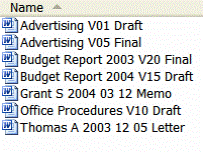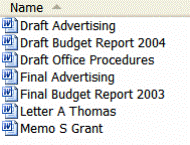Documentation:Toolkit for the Digitization of First Nations Knowledge/SECTION B: Project Planning/B5: Naming Conventions
< Documentation:Toolkit for the Digitization of First Nations Knowledge | SECTION B: Project Planning
- Give the digital file a meaningful but short name[1] to a maximum of 25 characters. [2]
- Use only the ASCII characters 0-9 and a-z in file names and use underscores or hyphens rather than spaces. Avoid upper case letters, whenever possible.
- Example:
- Correct: advertising_draft_2012-01-23.docx
- Incorrect: January 23 draft Advertising.docx
- Avoid using common words such as “draft” or “letter” at the start of file names as this can result in documents being grouped together when they should not be.
- Example:
- Always use the default 3 character file extensions: .tif, .jpg, .wav, .mp3, .pdf; and always use a period before these extensions
References
- ↑ In production environments it may be better to use the file naming sequencing that is afforded by the technology rather than using mnemonic file names as these can speed up processing and help avoid human error.
- ↑ It is prudent to confirm with IT support that all parts of the system support the 25 character maximum.

